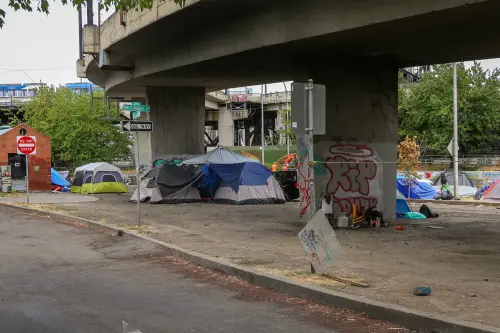The Ferguson Commission—convened by Missouri Governor Jay Nixon in the aftermath of the police shooting death of Michael Brown—was given a daunting task. Its charge was not only to examine the underlying causes of “the social and economic conditions that impede progress, equality, and safety in the St. Louis region,” but also to issue a report “containing specific, practical policy recommendations for making the region a stronger, fairer place for everyone to live.”
Reflecting the magnitude of that charge, the Ferguson Commission’s final report, released on Monday, totals almost 200 pages and contains 189 calls to action that span a range of issue areas, from police and court reform, to creating higher-quality education and training opportunities, to improving access to jobs, transportation, and affordable housing.
The sweeping scope of the report’s recommendations is in proportion to the complexity of the shifting economic and demographic trends and the legacy of racial discrimination that helped set the stage for last summer’s events. Like many of its neighboring communities, and suburbs across the country, Ferguson has recently experienced rapid demographic and economic changes, transitioning from a largely white to a majority black community that has seen its poor population double since 2000.
The report’s authors emphasize that they want readers to “realize how interconnected all of these issues are.” (That’s one reason for the interactive online design—to allow users to navigate across related initiatives, even if they fall in different issue areas.) And the commission situates their calls to action within a regional framework that recognizes these issues operate at a scale broader than one neighborhood or suburb.
Even so, the challenge of municipal fragmentation looms large, both in the commission’s report and in any move towards implementing its recommendations. The report acknowledges that “the current state of municipal fragmentation is both a result of and a propagator of racial disparity” and that many of St. Louis’ suburbs “have problems with budgets because of their small size.” The commission calls for consolidation of the region’s 60 local police departments and 81 municipal courts, a move which could improve oversight and compliance and save the region millions of dollars a year.
But the commission stops short of addressing the municipalities themselves, many of which would continue to struggle with strapped budgets even after these reforms. Capping the share of municipal revenue generated by fines and fees, as the state legislature has done, could help curb abusive practices, but it doesn’t solve the underlying problem. Many of these small municipalities don’t have the resources they need to meet their current budget obligations, let alone pay for additional services and programs that increase access to opportunity (like those called for in the Ferguson Commission’s report).
There is no easy solution, but there are models for the region to consider that could ameliorate the negative effects of fragmentation (e.g., municipal collaboration, municipal consolidation, and regional revenue sharing and governance structures) and potentially ease the way for the broader slate of reforms recommended by the commission.
Presented with a Gordian knot of a challenge, the Ferguson Commission has put forward its framework for changing the status quo—what it believes “to be the best starting point, the beginning of a path toward a better St. Louis.” And the reality is that failing to act on the deep-seated challenges facing the region means struggling suburbs like Ferguson, and their residents, will only fall further behind.



Commentary
Commission charts Ferguson’s path forward
September 16, 2015